Category: Critical Care
Posted: 5/31/2016 by Haney Mallemat, MD
Click here to contact Haney Mallemat, MD
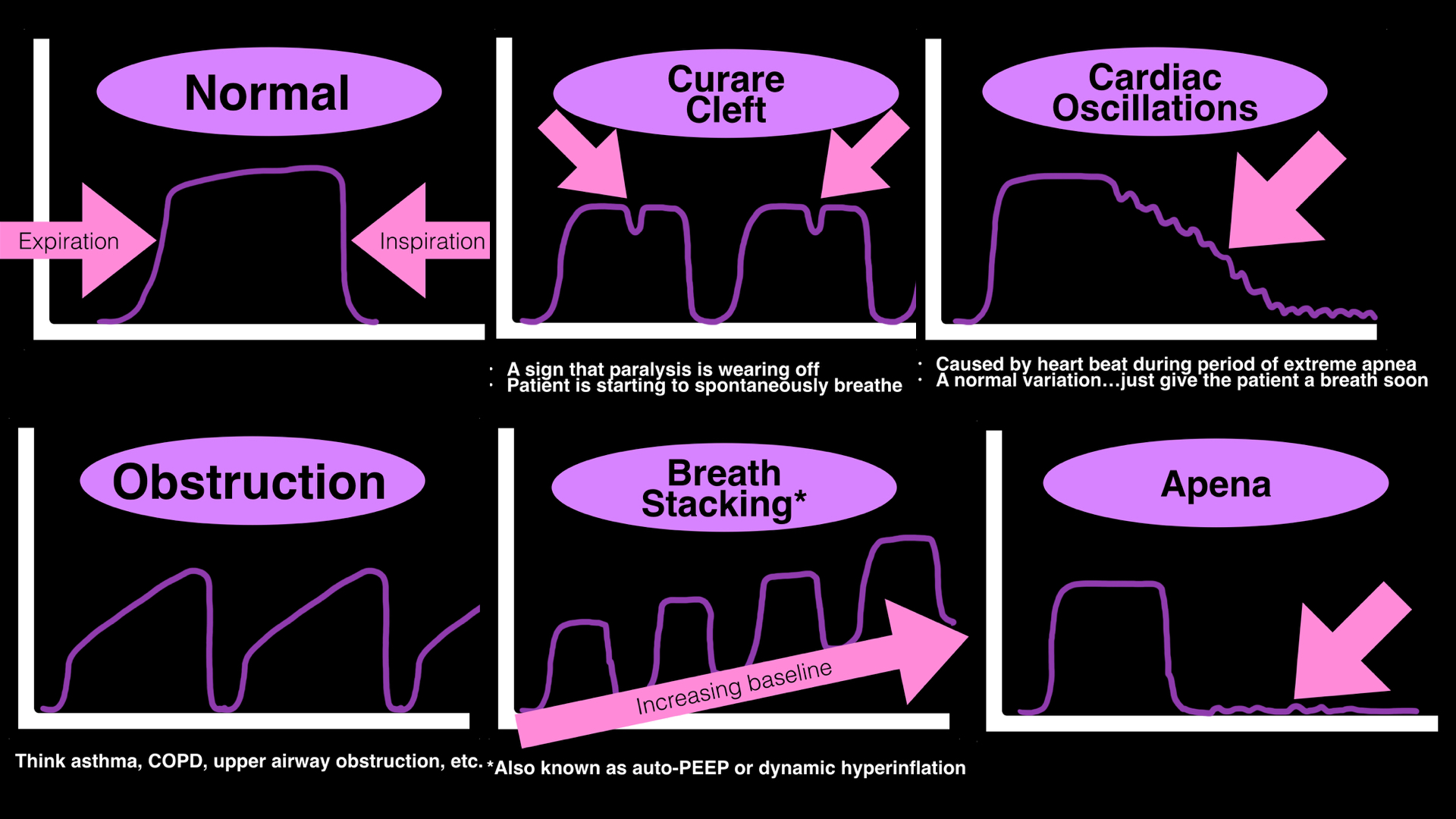
Follow me on Twitter (@criticalcarenow)a
Category: Critical Care
Posted: 4/5/2016 by Haney Mallemat, MD
Click here to contact Haney Mallemat, MD
Follow me on Twitter (@criticalcarenow)
Category: Critical Care
Posted: 3/8/2016 by Haney Mallemat, MD
Click here to contact Haney Mallemat, MD
Follow me on Twitter (@criticalcarenow)
Category: Visual Diagnosis
Posted: 2/29/2016 by Haney Mallemat, MD
Click here to contact Haney Mallemat, MD
19 year-old male complaining of left arm pain one week after injecting anabolic steroids into his shoulder. What's the diagnosis?
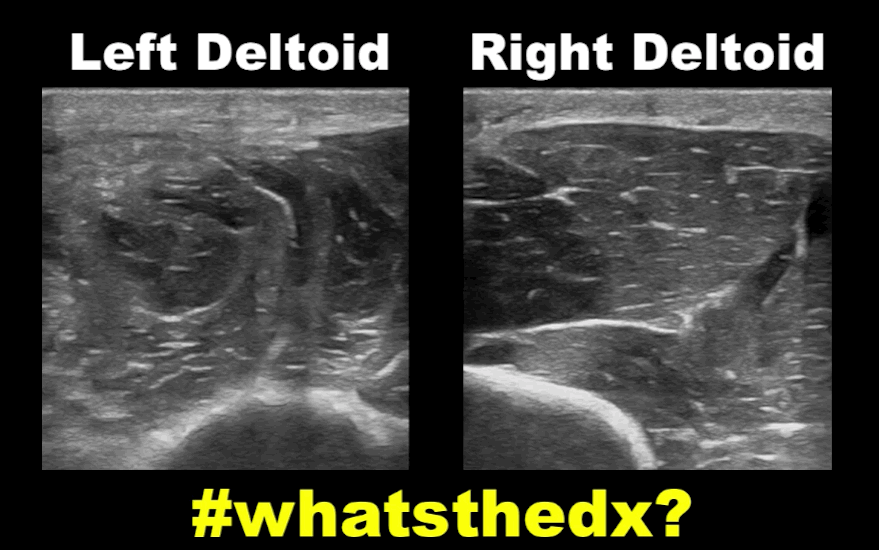
Myositis of the deltoid muscle
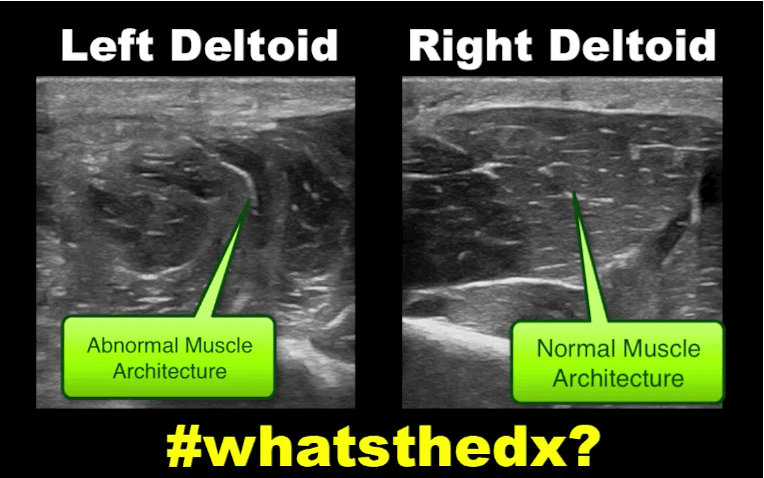
Follow me on Twitter (@criticalcarenow)
Category: Critical Care
Posted: 2/9/2016 by Haney Mallemat, MD
Click here to contact Haney Mallemat, MD
Follow me on Twitter (@criticalcarenow)
Category: Visual Diagnosis
Posted: 1/18/2016 by Haney Mallemat, MD
Click here to contact Haney Mallemat, MD
23 year-old female presents complaining of progressive right lower quadrant pain after doing "vigorous" exercise. CT abdomen/pelvis below. What’s the diagnosis? (Hint: it’s not appendicitis)
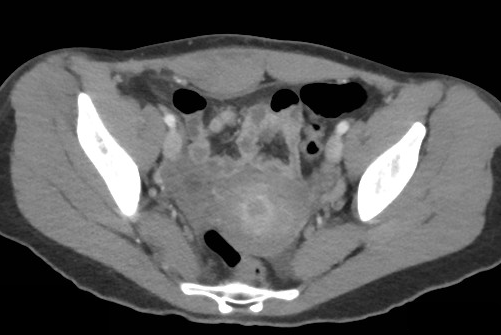
Rectus sheath hematoma
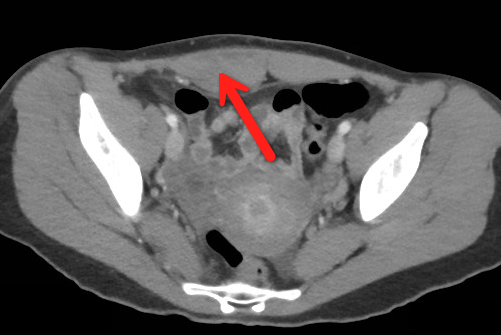
Rectus Sheath Hematoma (RSH)
Rectus muscle tear causing damage to the superior or inferior epigastric arteries with subsequent bleeding into the rectus sheath; uncommon cause of abdominal pain but mimics almost any abdominal condition.
Diagnose with CT, but try using ultrasound (thanks Dr. Joseph Minardi)
May occur spontaneously, but suspect with the following risk factors:
Typically a self-limiting condition, but hypovolemic shock may result from significant hematoma expansion.
Hemodynamically stable (non-expanding hematoma): conservative treatment (rest, analgesia, and ice)
Hemodynamically unstable (expanding hematoma): treat with fluid resuscitation, reversal of coagulopathy, and transfusion of blood products.
Follow me on Twitter (@criticalcarenow)
Category: Critical Care
Posted: 1/12/2016 by Haney Mallemat, MD
(Updated: 1/16/2016)
Click here to contact Haney Mallemat, MD
There are so many variables to monitor during CPR; speed and depth of compressions, rhythm analysis, etc. But how much attention do you give to the ventilations administered?
The right ventricle (RV) fills secondary to the negative pressure created during spontaneously breathing. However, during CPR we administer positive pressure ventilation (PPV), which increase intra-thoracic pressure thus reducing venous return to the RV, decreasing cardiac output, and coronary filling. PPV also increases intracranial pressure by reducing venous return from the brain.
So our goal for ventilations during cardiac arrest should be to minimize the intra-thoracic pressure (ITP); we can do this by remembering to ventilate "low (tidal volumes) and slow (respiratory rates)"
Follow me on Twitter (@criticalcarenow)
Category: Visual Diagnosis
Posted: 1/11/2016 by Haney Mallemat, MD
(Updated: 3/10/2016)
Click here to contact Haney Mallemat, MD
What’s the name of this CT finding and name two potential causes?

Pneumobilia (air in the biliary tree). Be careful, this must be distinguished from portal venous gas.
Diagnoses to consider when pneumobilia is present:
Category: Visual Diagnosis
Posted: 12/28/2015 by Haney Mallemat, MD
Click here to contact Haney Mallemat, MD
79 year-old male with headaches, ataxia, falls, and difficulty urinating. What's the diagnosis?
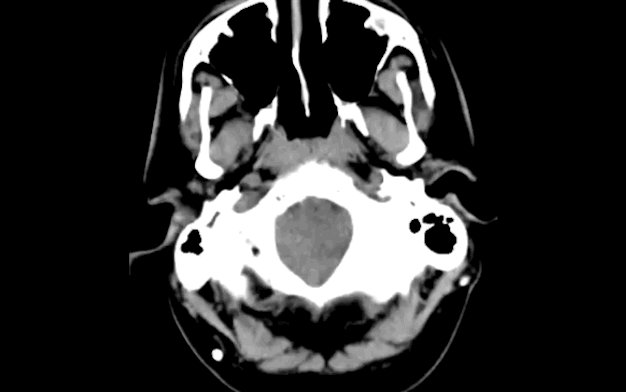
Diagnosis: Ventriculomegaly secondary to Normal Pressure Hydrocephalus
An approach to ventriculomegaly
Ventriculomegaly is due to cerebral atrophy (e.g., Parkinson disease) or increased cerebrospinal fluid (CSF) within the ventricles. Increased CSF is due to:
Congenital causes of ventriculomegaly:
Acquired causes of ventriculomegaly:
Follow me on Twitter (@criticalcarenow)
Category: Visual Diagnosis
Posted: 12/15/2015 by Haney Mallemat, MD
Click here to contact Haney Mallemat, MD
A patient arrives in acute respiratory distress with left sided chest pain. Ultrasound of the left anterior chest is shown; what's the diagnosis and name one false positive?
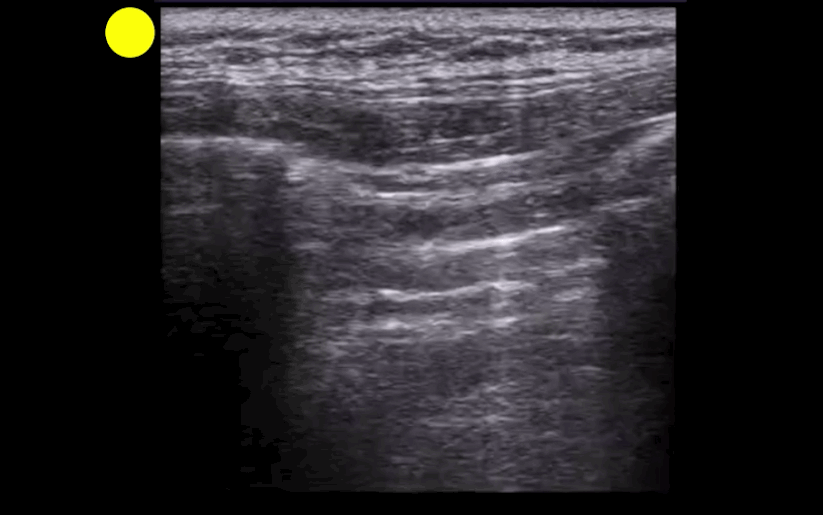
Lung point indicating pneumothorax (PTX)....see below for the false positives
What's the (Lung) Point
Follow me on Twitter (@criticalcarenow)
Category: Visual Diagnosis
Posted: 12/14/2015 by Haney Mallemat, MD
Click here to contact Haney Mallemat, MD

Ruptured gastric ulcer with pneumoperitoneum (CT scan below)
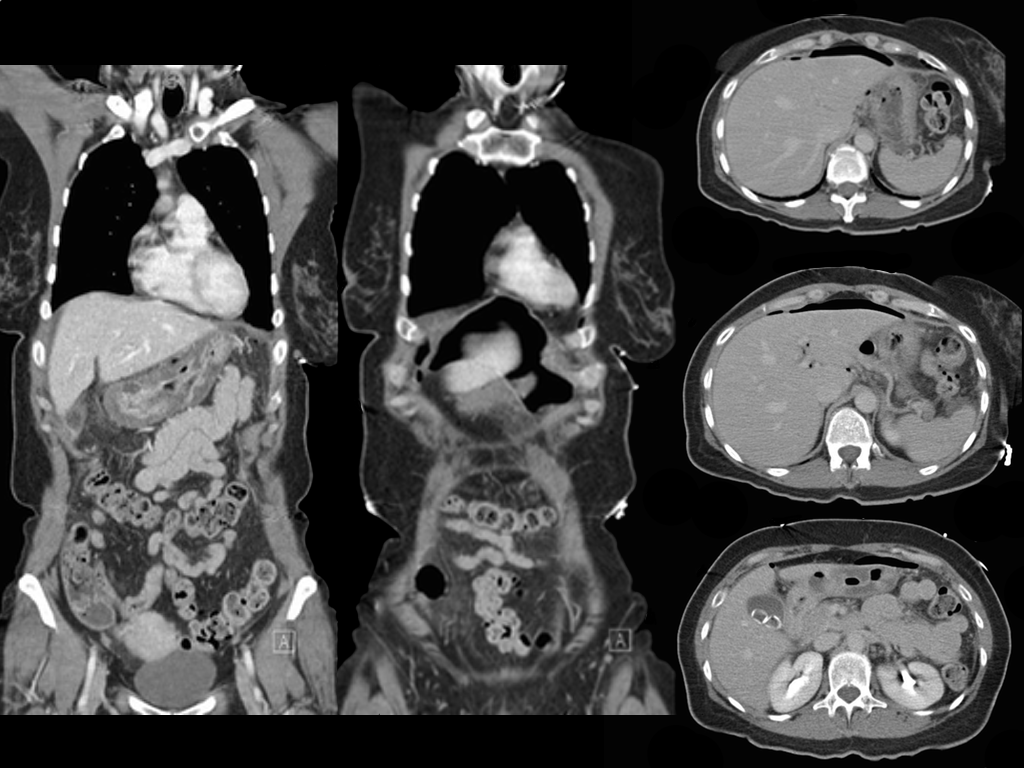
Follow me on Twitter (@criticalcarenow)
Category: Visual Diagnosis
Posted: 12/7/2015 by Haney Mallemat, MD
(Updated: 12/8/2015)
Click here to contact Haney Mallemat, MD
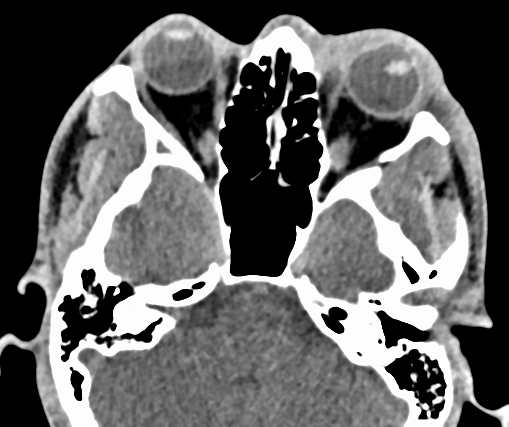
Lens disclocation
Follow me on Twitter (@criticalcarenow)
Category: Visual Diagnosis
Posted: 11/30/2015 by Haney Mallemat, MD
Click here to contact Haney Mallemat, MD
Patient presents with right elbow pain after a fall. What's the diagnosis and what other injury should you look for?
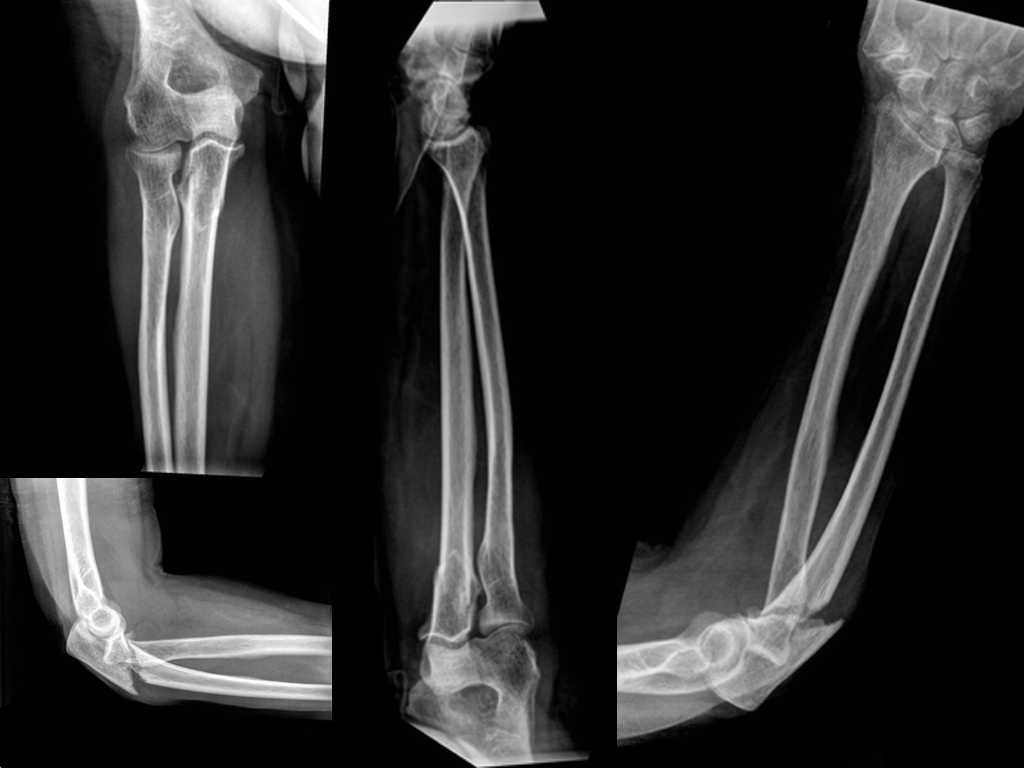
Displaced fracture of the proximal ulna.
Pearls
Follow me on Twitter (@criticalcarenow)
Category: Visual Diagnosis
Posted: 11/23/2015 by Haney Mallemat, MD
(Updated: 12/5/2015)
Click here to contact Haney Mallemat, MD
An elderly patient presents with a history of weight loss and chronic constipation. The abdominal Xray is shown below. What's the diagnosis?
This one is tricky so here's a hint: why is the right kidney and psoas muscle so well defined?
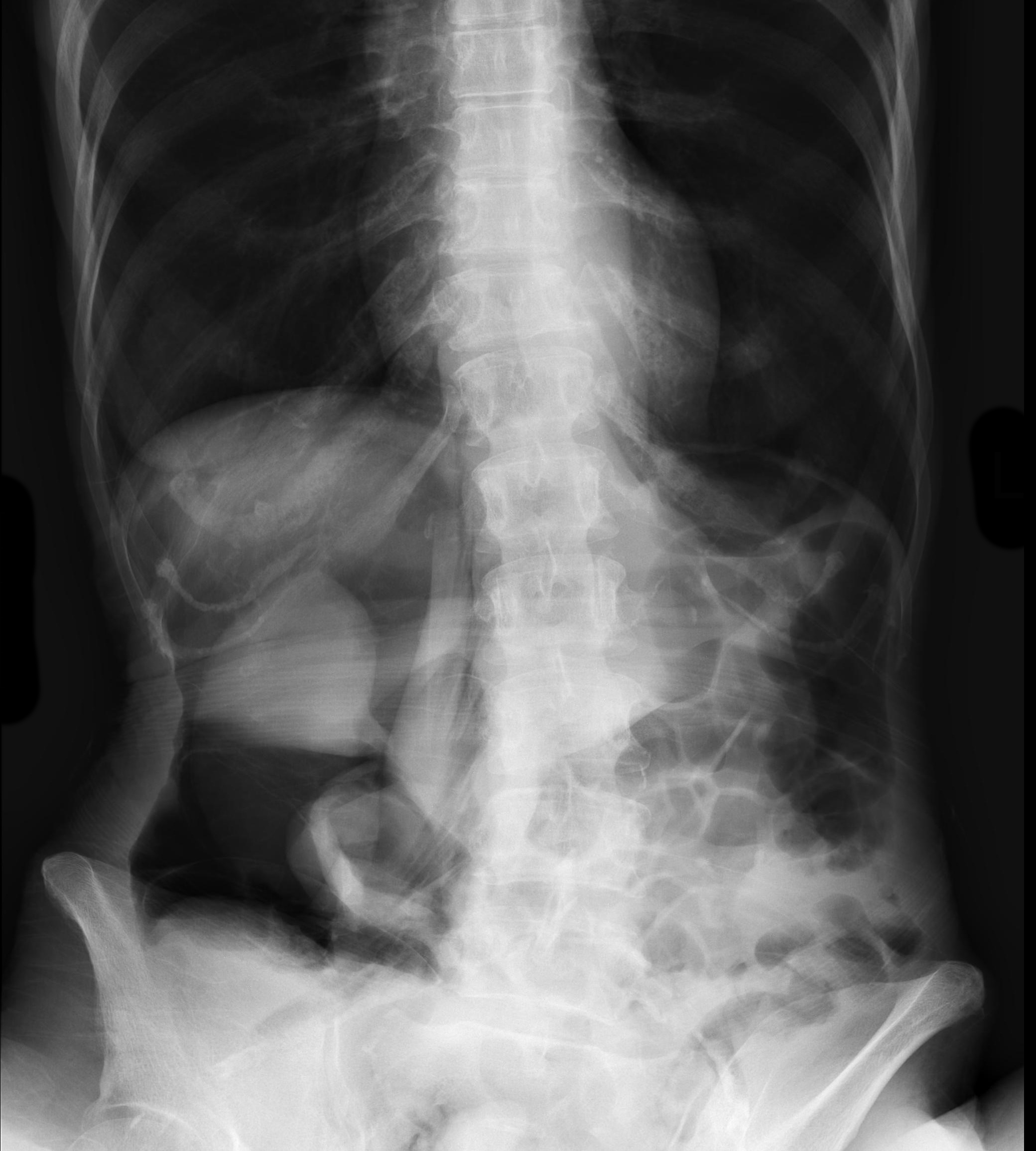
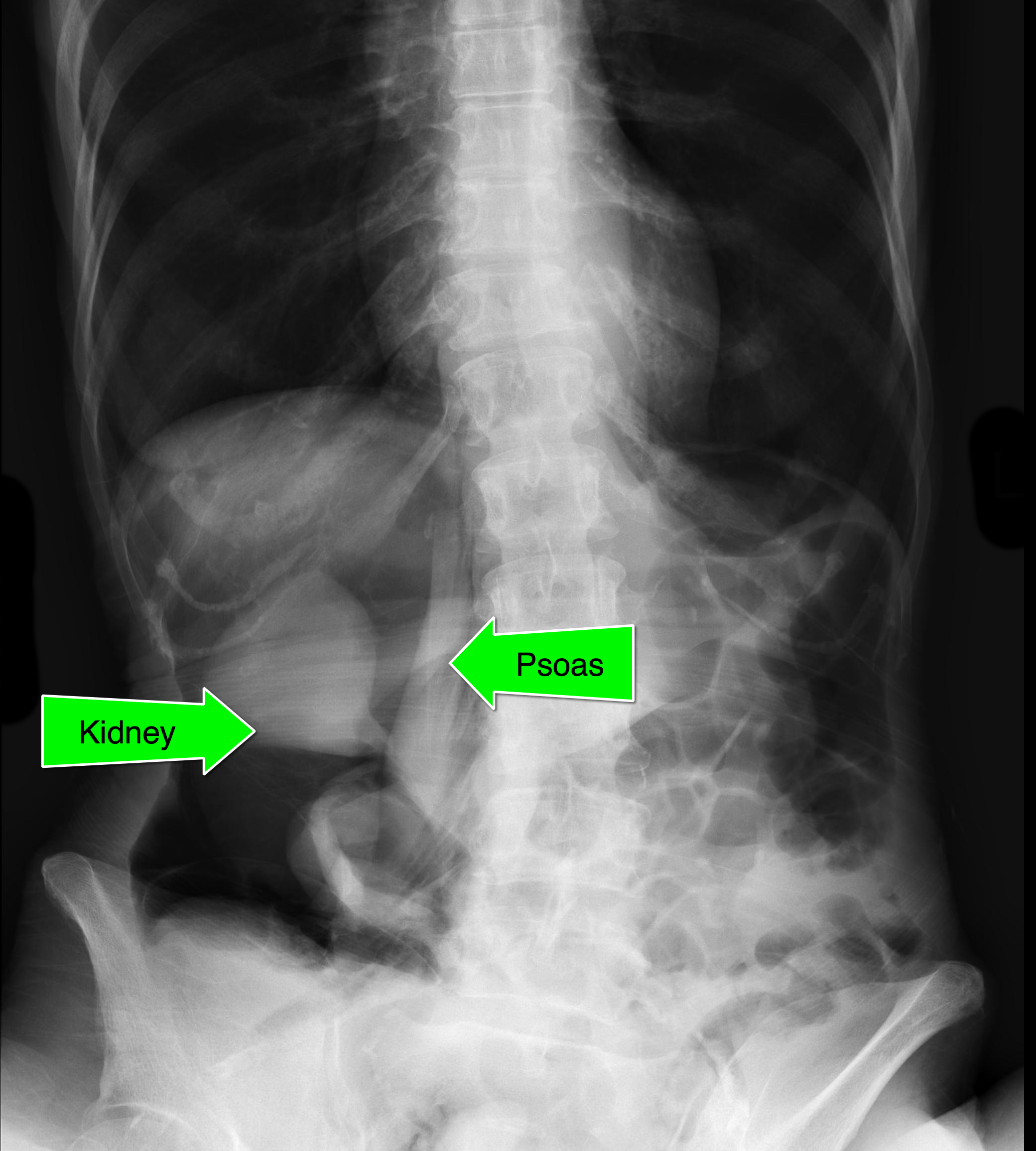
Follow me on Twitter (@criticalcarenow)
Category: Visual Diagnosis
Posted: 11/1/2015 by Haney Mallemat, MD
Click here to contact Haney Mallemat, MD
Patient complains of facial and neck swelling, what's the diagnosis?

Subcutaneous emphysema
Follow me on Twitter (@criticalcarenow)
Category: Critical Care
Posted: 10/20/2015 by Haney Mallemat, MD
Click here to contact Haney Mallemat, MD
There is more than the standard preparations of plasma, platelets, and PRBCs in the blood bank. Certain patients will require these specialized preparations when a transfusion is required. Here are three to know:
Follow me on Twitter (@criticalcarenow)
Category: Visual Diagnosis
Posted: 10/19/2015 by Haney Mallemat, MD
Click here to contact Haney Mallemat, MD
8 year-old female presents with nausea, vomiting, double-vision and inability to move her left eye upwards after being kicked in the face at school. What's the diagnosis?
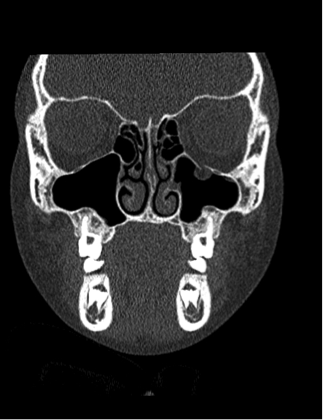
Orbital floor fracture with entrapment of the inferior rectus muscle.
Follow me on Twitter (@criticalcarenow)
Category: Visual Diagnosis
Posted: 10/12/2015 by Haney Mallemat, MD
Click here to contact Haney Mallemat, MD
5 year-old boy who presents with sudden onset hoarse voice, and drooling without a fever.

Coin lodged in the esophagus
Coin ingestions
Follow me on Twitter (@criticalcarenow)
Category: Visual Diagnosis
Posted: 10/5/2015 by Haney Mallemat, MD
(Updated: 10/7/2015)
Click here to contact Haney Mallemat, MD
Patient presents after being started on an antibiotic for cellutlitis of lower extremity. What's the diagnosis and what are some other etiologic agents (name 3)
Erythema Multiforme (minor)
Follow me on Twitter (@criticalcarenow)
Category: Visual Diagnosis
Posted: 9/28/2015 by Haney Mallemat, MD
Click here to contact Haney Mallemat, MD
26 year-old male presents with a swollen 4th digit and pain during extension, what’s the diagnosis?
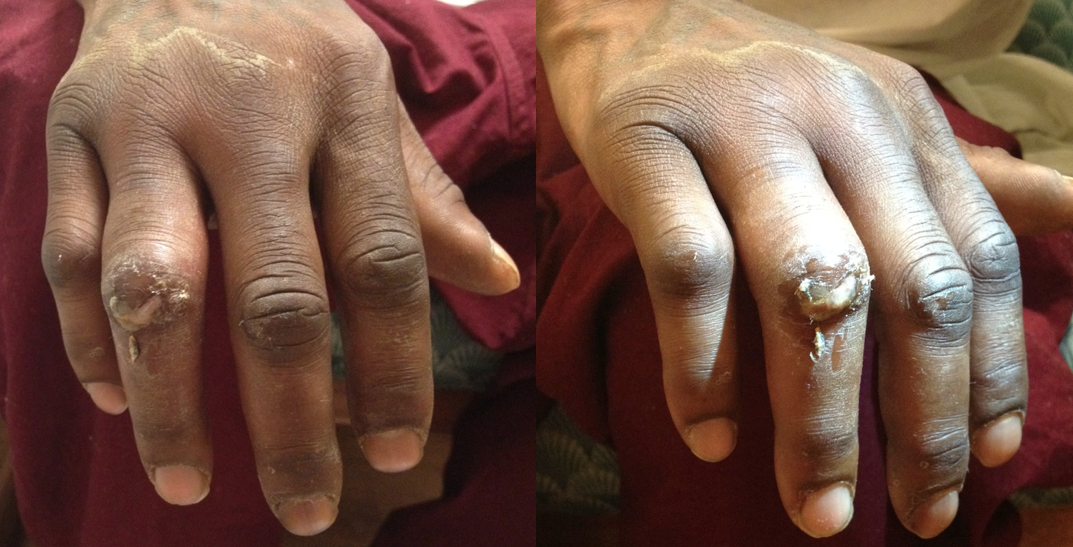
Answer: Infectious Flexor Tenosynovitis
Infectious Flexor Tenosynovitis
Follow me on Twitter (@criticalcarenow)
